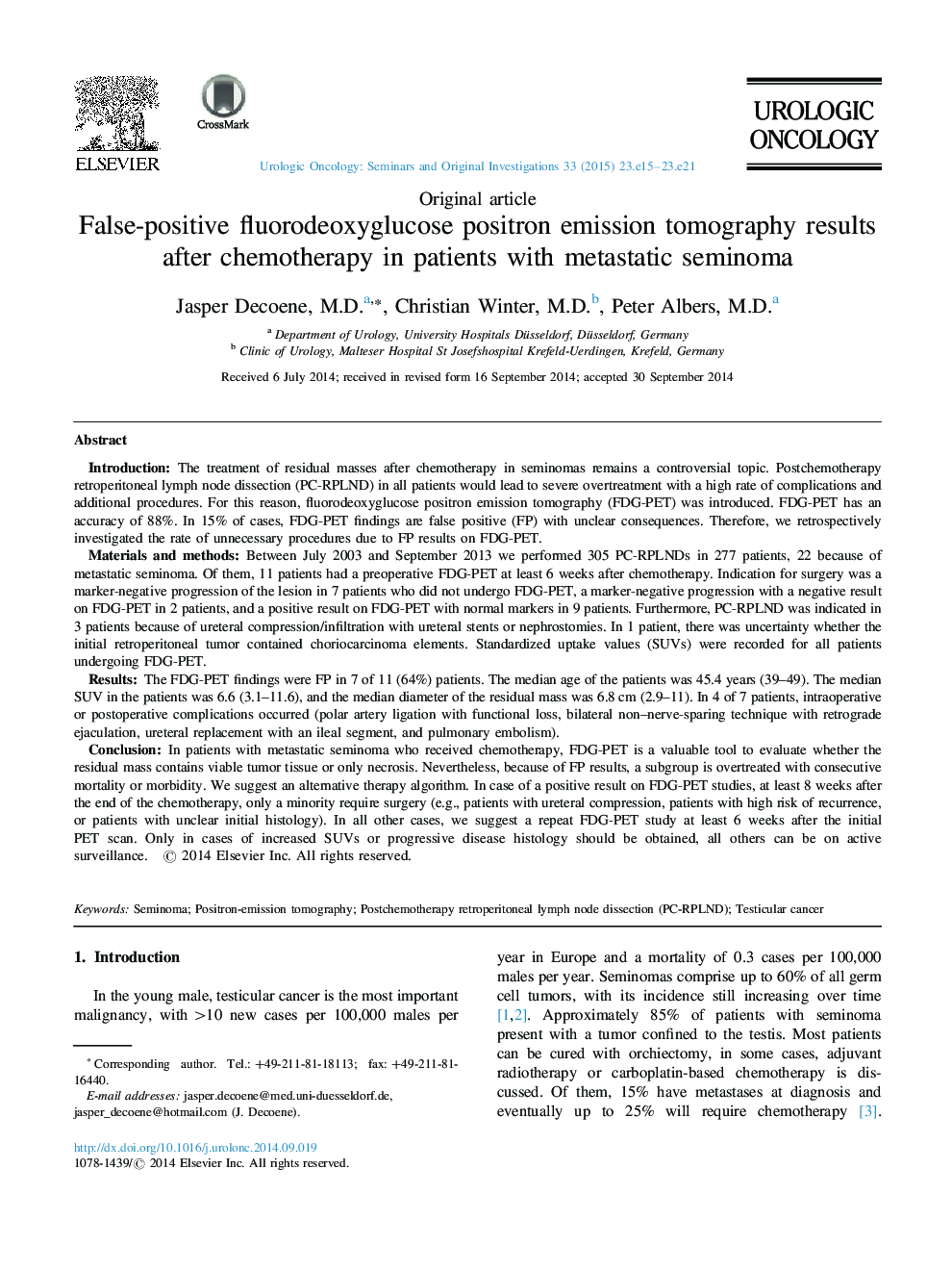| Article ID | Journal | Published Year | Pages | File Type |
|---|---|---|---|---|
| 6194240 | Urologic Oncology: Seminars and Original Investigations | 2015 | 7 Pages |
Abstract
In patients with metastatic seminoma who received chemotherapy, FDG-PET is a valuable tool to evaluate whether the residual mass contains viable tumor tissue or only necrosis. Nevertheless, because of FP results, a subgroup is overtreated with consecutive mortality or morbidity. We suggest an alternative therapy algorithm. In case of a positive result on FDG-PET studies, at least 8 weeks after the end of the chemotherapy, only a minority require surgery (e.g., patients with ureteral compression, patients with high risk of recurrence, or patients with unclear initial histology). In all other cases, we suggest a repeat FDG-PET study at least 6 weeks after the initial PET scan. Only in cases of increased SUVs or progressive disease histology should be obtained, all others can be on active surveillance.
Related Topics
Health Sciences
Medicine and Dentistry
Oncology
Authors
Jasper M.D., Christian M.D., Peter M.D.,
